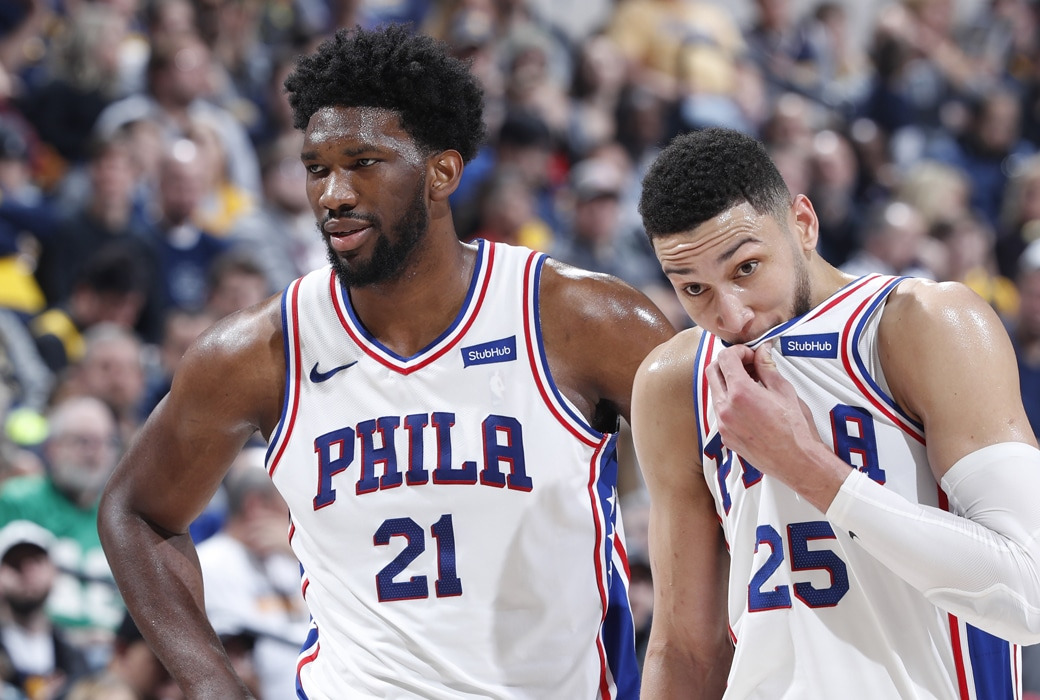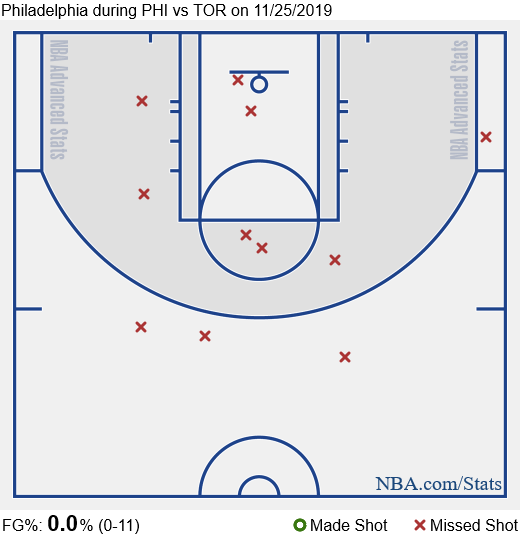The Sixers Sure Could Use a Perimeter Scorer

After soaking in Philadelphia’s road loss to the Raptors on Monday, one thing has become abundantly clear.
The Sixers are lacking a dynamic perimeter scoring threat.
That’s not exactly news, but the degree to which Philly requires someone who can get the ball atop the key and just create their own shot was underscored against the Raptors, who are the sort of strong defensive outfit that the Sixers will eventually face down the line.
Make no mistake – though the Raptors remain very, very good, they were missing their starting point guard and sixth man. Monday’s loss was a bad one for the Sixers, and they came up empty over the final four minutes as a late lead frittered away. It was a painful reminder that there is a certain element missing despite all of the talent and potential that the Sixers do still hold.
For all of the perceived flaws that Jimmy Butler has, that’s the sort of moment where he proved capable of taking over and grinding out a much-needed score. Last year’s playoffs made it evident that he was the guy to grab the rest of the team and pull them through the fight, and while there are aspects of that attitude that remain with the current Sixers, the sheer ability to go knock down a tough shot is currently lacking given the team’s hierarchy and composition.
It calls back to the same conversations about floor spacing that have been constant since Ben Simmons and Joel Embiid have emerged as Philadelphia’s clear building blocks.
Simmons, for obvious reasons, is not the perimeter scorer that the Sixers need.
Al Horford, for as excellent as he is in all facets of the game, is not necessarily the guy that you’re comfortable tossing into an end-of-clock situation and asking for a bucket. He is a perfect complementary player – and that’s underselling his contributions substantially – but most opponents will probably live with Horford hunting out his own shots against a dwindling clock rather than him picking the defense apart as a facilitator. He’s a scalpel, not a hammer.
Embiid also has major work to do, though he’s a more viable option than Simmons. At this point, and especially on Monday night, the big issue is that Embiid shows fleeting interest in getting to his most effective spots on the floor. Perhaps it’s a mental block, with the lingering specter of Marc Gasol’s playoff work forcing Embiid to the outside subconsciously. Maybe it’s a tactical choice, or maybe it’s just the ebb and flow of a season resulting in a weird game that just so happened to be one that was bound to catch a lot of viewers.
Whatever it is, this is not an acceptable shot chart for Embiid.
Yeah, Embiid probably won’t ever go scoreless again, but he certainly
didn’t help tilt the odds in his favor. Even if Gasol is his personal
Thanos, this can’t happen.

It’s fair to question how much of that is a byproduct of the way the Sixers play and/or are constructed and how much of that is freelancing on Embiid’s part. Talented people can afford to cut corners, but if that is what’s happening then it needs to be weeded out. The reaction from
Simmons here doesn’t paint a great picture.
Philly’s two best options to fill this specific part of the Butler void are Tobias Harris and Josh Richardson. Both come with their own flaws, but there may also be fewer hurdles en route to filling the role.
For Harris, matters aren’t helped by his rough start from behind the arc. Still, even with a .307 mark from deep, Harris is shooting .498 from the field and is taking most of his shots from the paint and restricted area, which is a great formula for success.
But while Harris is an effective scorer, he’s not typically a player that can be turned to in isolation situations. Last year, just about half of his shots came off assists (306 to 305). This year there’s a larger gap, with 67 buckets coming off assists and 54 coming without. More tellingly, Harris has been credited with 15 isolation possessions through 17 games and is shooting .267 on such plays, good for 0.53 points per possession. Not good enough.
Richardson, despite his experience as a temporary lead dog in Miami, has done even less work in isolation. Last season saw him spend just 2.4% of his possessions that way, and this year he hasn’t even hit the minimum number of iso possessions required to appear on the NBA’s leaderboard. He’s more liable to operate in the mid-range than Harris, but typically the Sixers aren’t looking for him to go out and create his own looks.
On top of all that, if you empower Harris or Richardson to start taking on those go-to possessions, you run into the old problem of Simmons needing to make himself useful without the ball in his hands.
Ultimately Philadelphia has a guy that defenses will completely ignore from the outside, another who has opposing teams begging for 3-point attempts to avoid the alternative, and three that aren’t natural or logical fits, with bench pieces that would bring even more issues to the fore in closing groups.
And yet, the Sixers figure to be near the top of the pile at the end of the season. If not for some incredibly sloppy turnovers, they could well have left Toronto with a victory and everyone could chuckle at Embiid’s dud and move on. This team is a major threat, even on bad days.
There is no right or wrong in this situation. Teams can be built in myriad ways. For a team with championship aspirations, however, it could become a serious problem down the line. The Sixers felt its effects on a November night against the shorthanded Raptors, and you would wager that it’s an issue that’s already on their radar. One wonders how they’ll work around it as the season progresses.
Post a comment